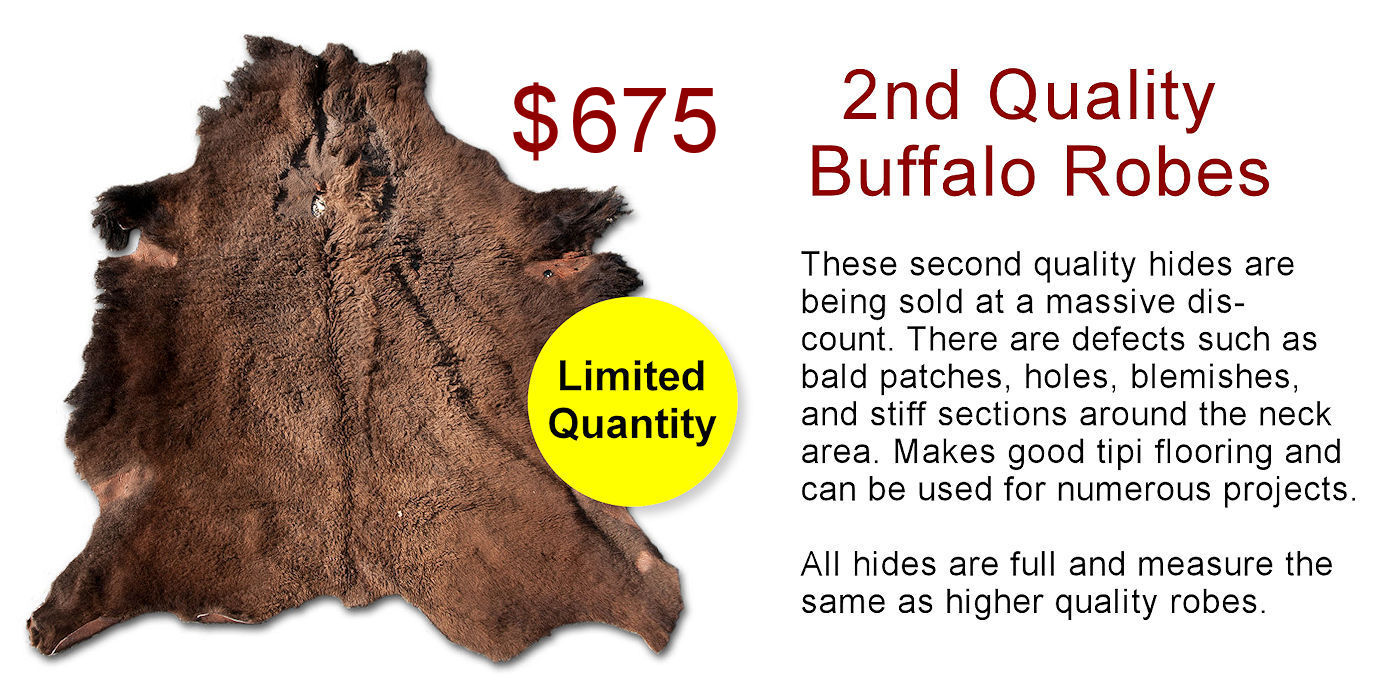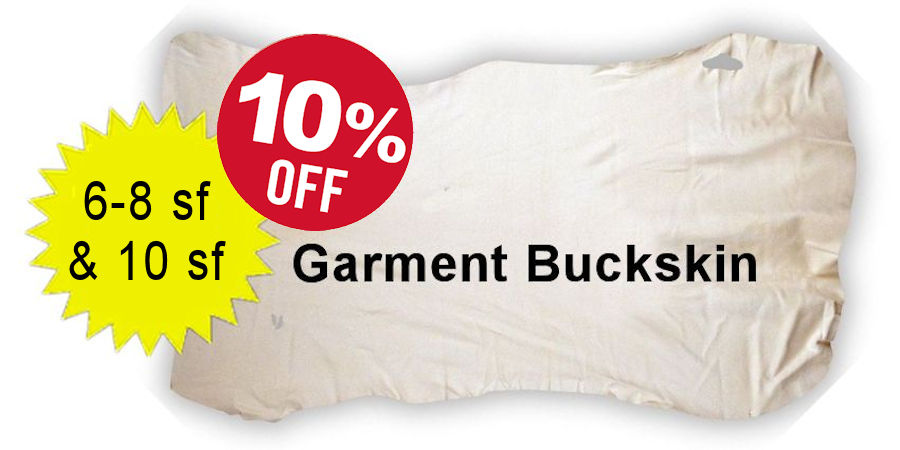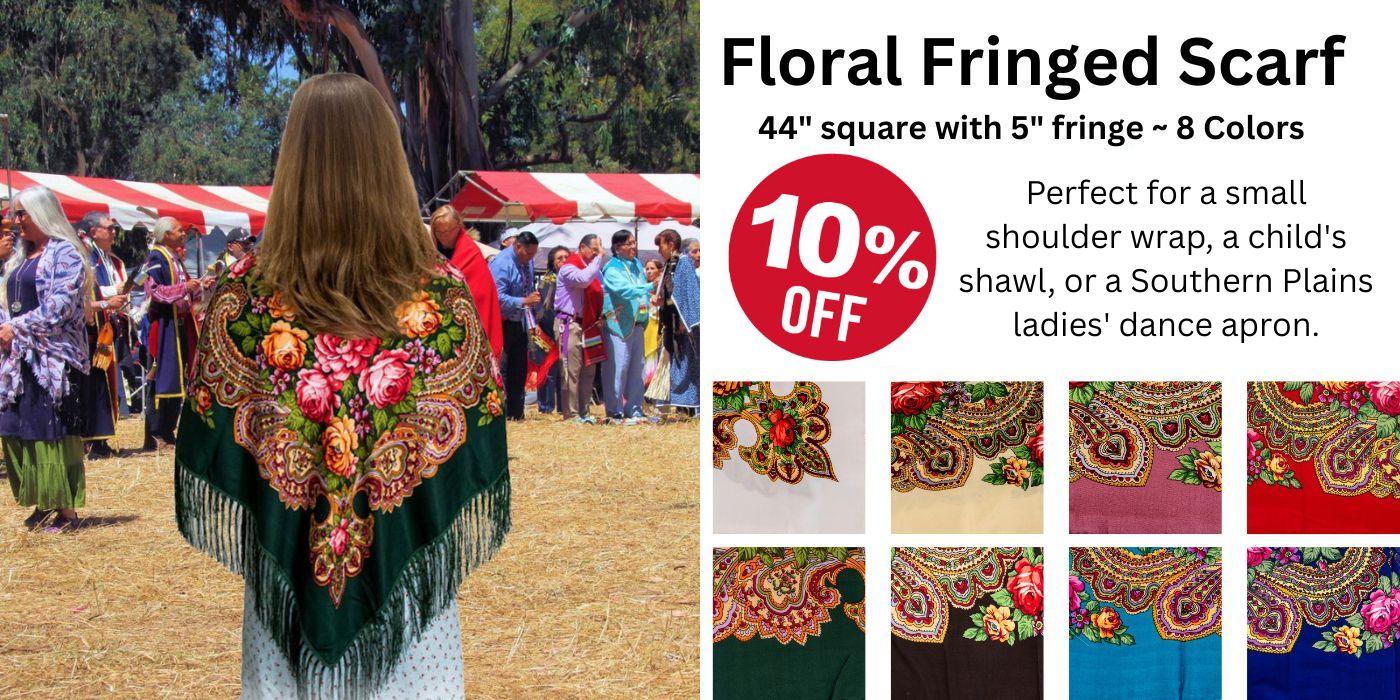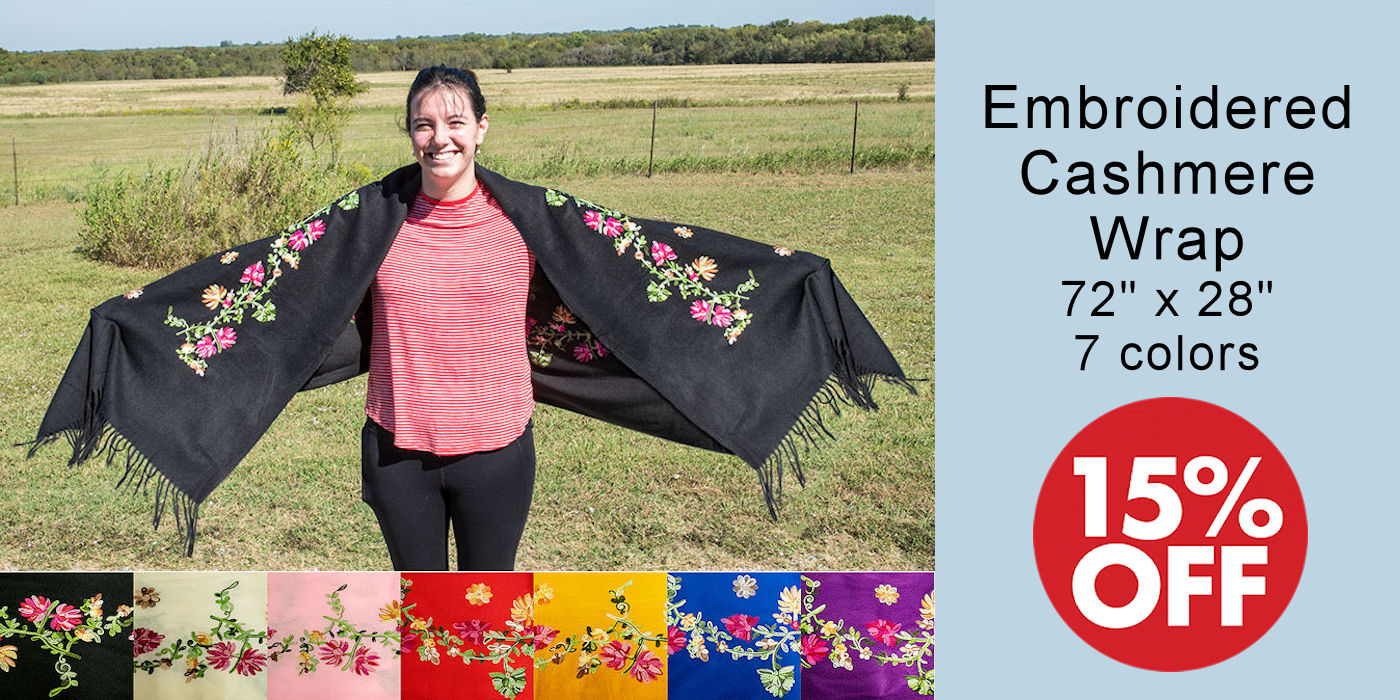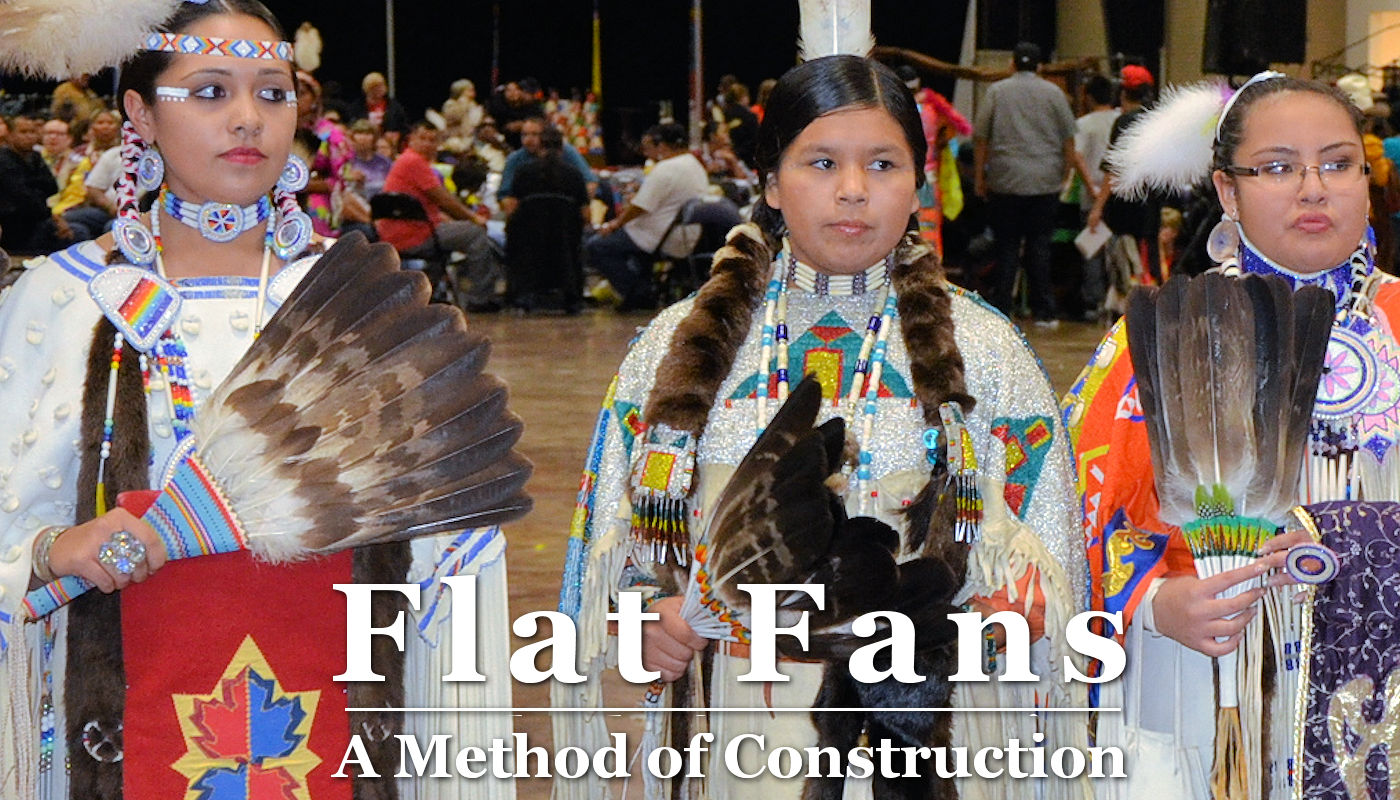

American Indian Flat Dance Fan Construction
Page 5 | By Rex Reddick
Reprinted from Whispering Wind: Vol. 33 No. 4
American Indian Flat Dance Fan Construction
Page 5 | By Rex Reddick
Reprinted from Whispering Wind: Vol. 33 No. 4
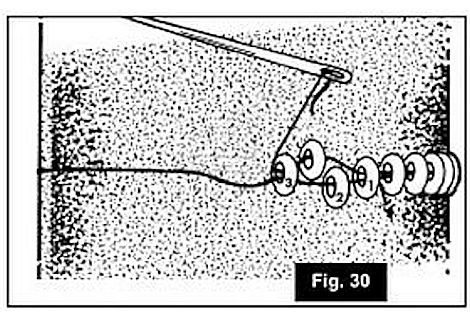
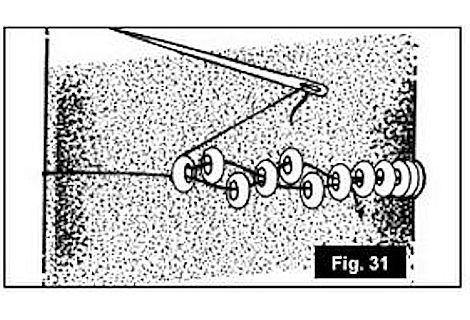
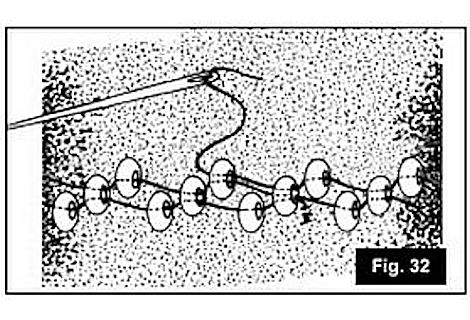
snugly together, by pulling the thread in the opposite direction of needle travel, as shown inFigure 30. This new bead should be located between the original 2nd and 3rd beads on the string, in a ´stair-stepped´ configuration. Next, pick up a new bead, skip the next bead, and run the needle through the following one, as shown in Figure 31. Repeat this process of adding a new bead, skipping one, and going through the next one, until all 10 beads have been added back to the work, which completes the first row. You should now examine the work carefully to be sure that all the beads are correctly positioned. See Figure 32.
To advance to the second row, simply run your needle through the first bead of the row just completed.
Pick up a new bead, and go through the second bead of the completed row, as shown inFigure 32. As beads are put on, each time around the handle adds 1/3 of the total number of beads around. Three times around adds a complete row of units. Continue in this manner as you add successive rows, going through the first bead of the row a second time as you begin the next one.
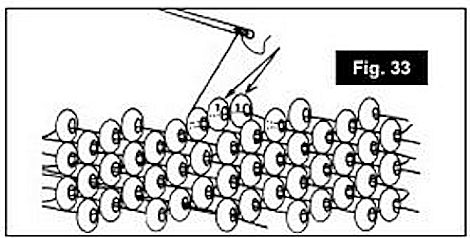
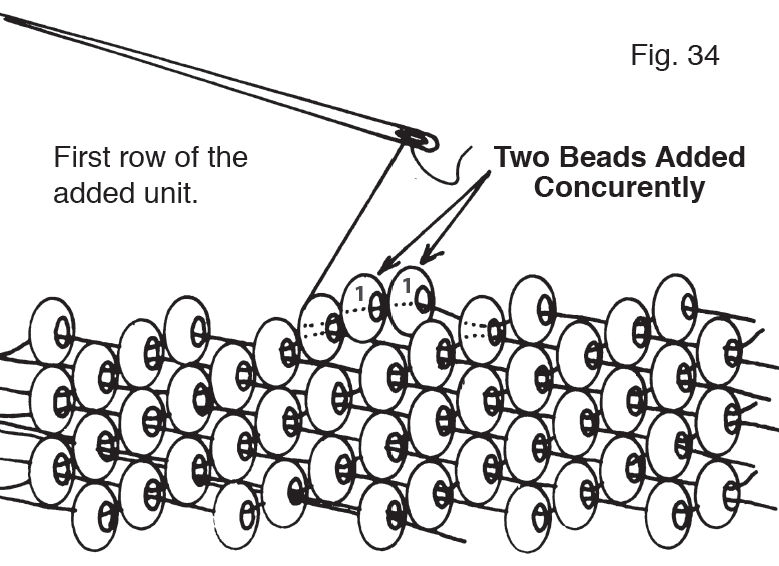
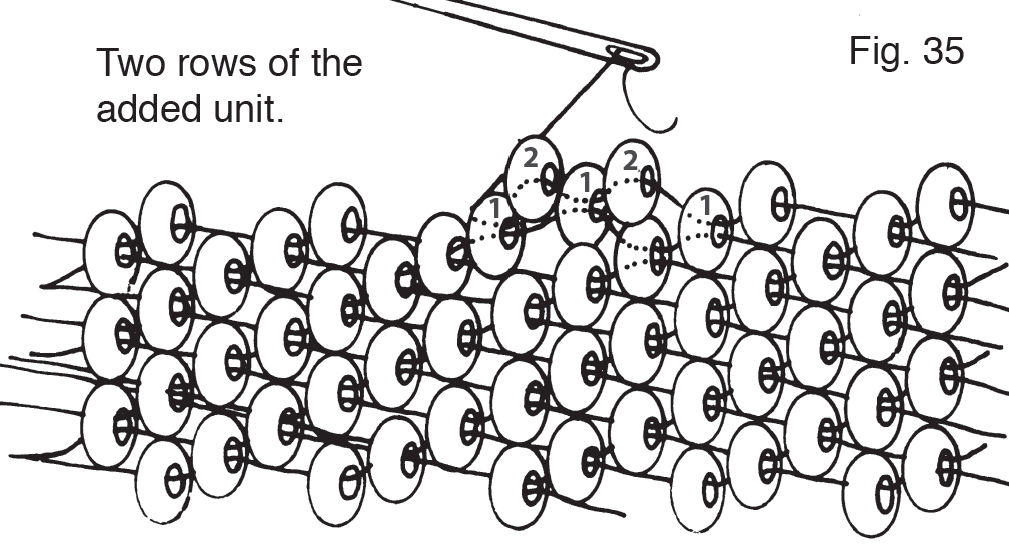
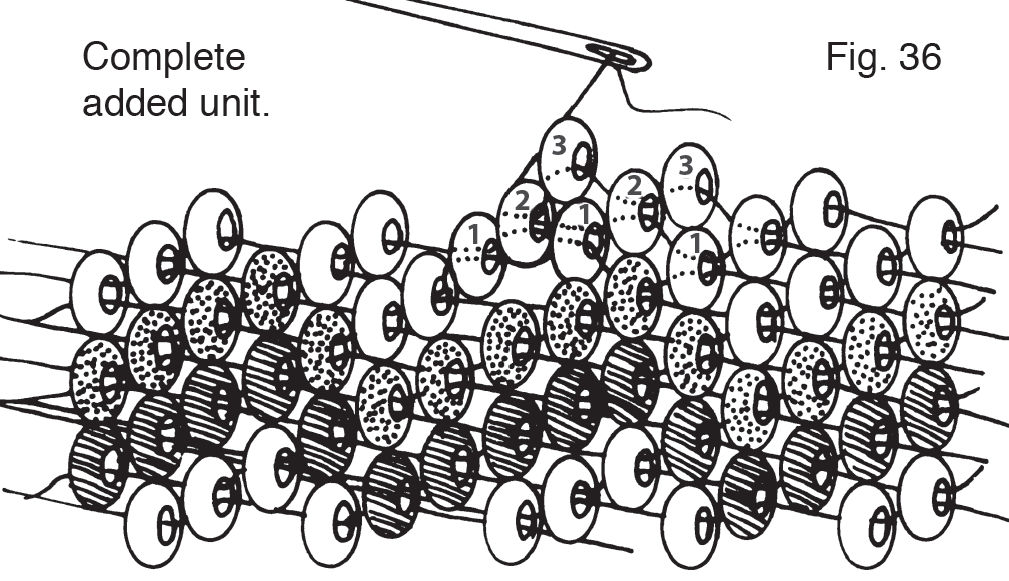
As the beadwork moves up the handle to the tapered area, the beads will tend to spread further and further apart. Beads must be added to fill in this extra area and this technique is shown in Figures 33 thru 35.
Extra beads are actually added one at a time, by first placing 2 beads where one would normally go, and so on, but the idea is to add a complete unit on each side in order for the design to remain balanced, and three passes around the handle are required to add a complete unit.
One of the tricks to expanding the work is add these units in the background color of the work rather than in the design area. This is not always possible, but it can often be done. It is also helpful to add beads on the sides of the work; thus making them almost inconspicuous from the front or back of the fan.
While it is extremely important to select uniformly sized beads in order to produce fine quality gourd stitch, ´thicker´Â or ´thinner´Â shaped beads can be used to advantage when adding units. As the handle begins to taper outward, the beads tend to spread apart as you progress up the handle. This can be overcome to a degree by using slightly ´fat´Â beads in some places, normally on the sides of the work where they are not so obvious. Then, when there is enough space to allow two beads to fit into the place of one (often just above one of these fat beads), thinner beads can be selected so as to fit in a little easier, thus making for neater work with fewer ´holes´Â and a more even appearance.
Decorative Ideas
I highly recommend that you study photos, books, magazine articles and museum pieces for ideas on beadwork designs and colors. You will also find many ideas for handle shapes, trim feathers and all sorts of little ´extra decorative touches´Â and fancy feather work that individual craftsmen use when making fans.
Acknowledgments
The methods described here have been developed over many years of experience and with the advice and help of several highly experienced fan makers, including Ben Stone, John Panther, Joe Rush, James Chasenah, Dick Past and Tyrone Stewart. Many varied techniques are used by other craftsmen, and as you proceed, you may well develop a few tricks of your own.
References
Hamm, Jim. Bows & Arrows of the Native Americans, Bois d’Arc press, Goldthwaite, Tx., 1989. Past, Richard. Personal conversations, 1967-1968.
Stewart, Ty. Modern Flat Fans. American Indian Crafts & Culture, Tulsa, Ok., 4:4, p. 3, November 1970.
Stone, Ben. Personal conversations and instructions, 1970-1974.
Crazy Crow Articles
Current Crow Calls Sale
November – December
SAVE 10%-25% on popular powwow, rendezvous, historic reenactor, bead & leather crafter supplies, second quality buffalo robes for special projects, bison splits & buckskin, Native American Design Fleece Blankets, Patterns, Carbon Steel Blades, Fan & Roach Feather Cases, beading kits, leather beading tools, camp utensils, huge selection of imported beadwork in Czech beads, strung fluffs, dream catcher kits, large floral fringed scarf and embroidered cashmere wraps, and much more.









